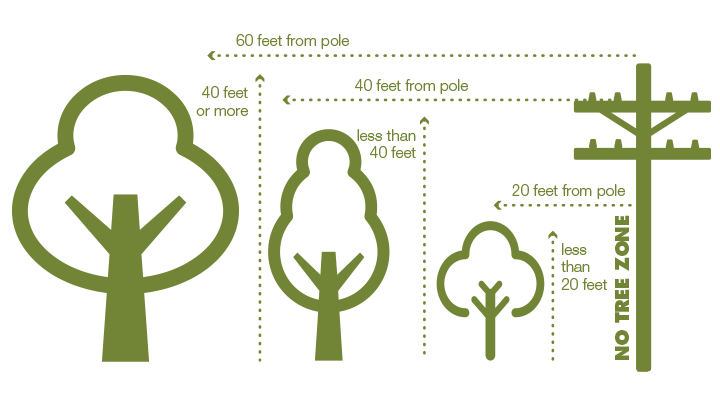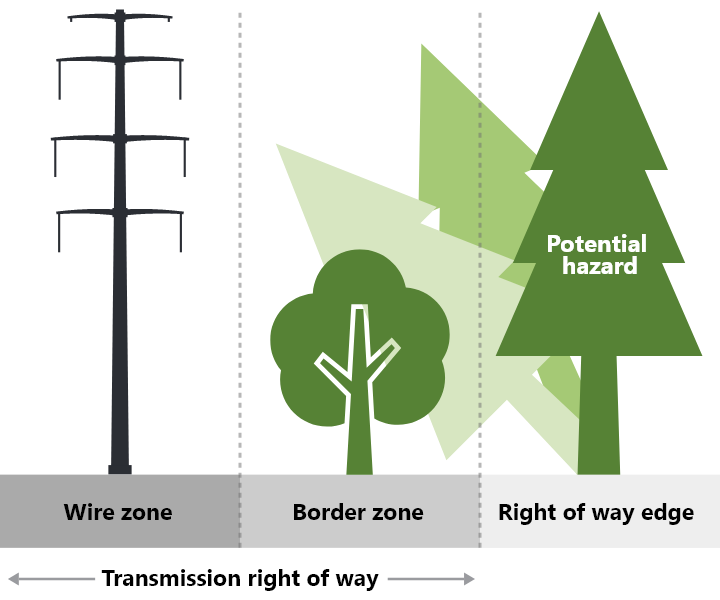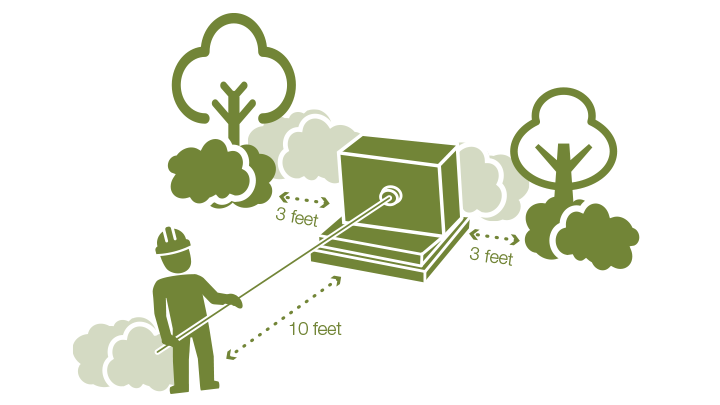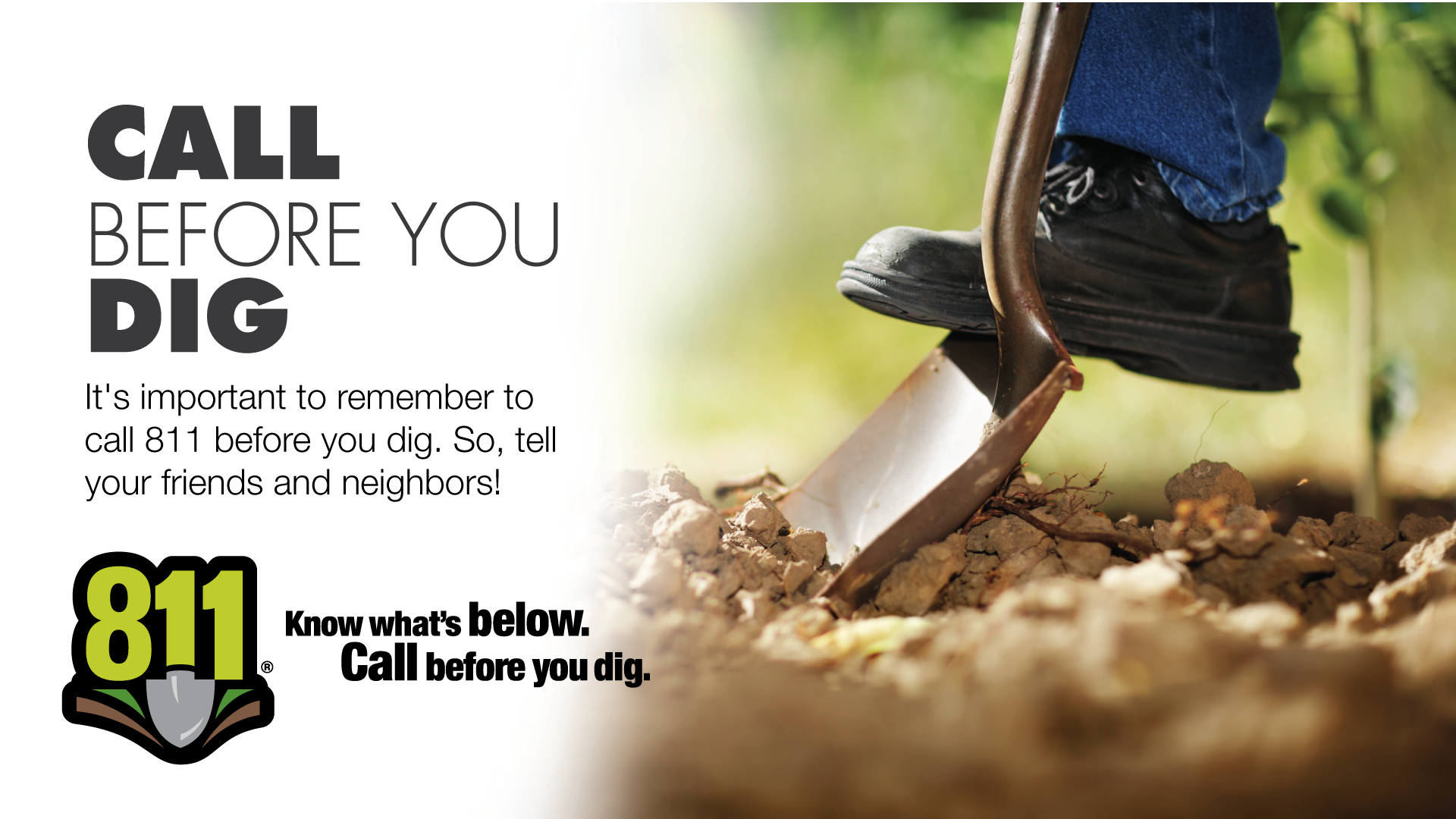Planting Trees
When you're planting new trees or shrubs on your property, make sure to consider its expected height at maturity and its proximity to electric utility lines on your property, such as residential power lines or larger transmission lines. Refer to this guidelines to ensure you plant the right trees in the right place. MidAmerican reserves the right to remove any vegetation that poses a threat to the safety and reliability of our systems.
Planting trees a safe distance from power and transmission lines
Small trees (under 20 feet at maturity)
-
These are the only trees that are safe to plant within 20 feet of a power line pole or within the border zone of a transmission line's right of way.
Medium trees (between 25-40 feet at maturity)
-
Trees this size should be over 40 feet away from a power line pole and outside a transmission line's right of way.
Large trees (40 feet or larger at maturity)
-
The largest trees need the most room, so they should be planted over 60 feet away from a power line pole and outside a transmission line's right of way.

Trees that are easy to climb and fast-growing trees with weak branching patterns should not be planted near power lines. Pines, especially white pines, are among the easiest trees to climb. Siberian elm, weeping willow and silver maple tend to split easily under heavy rain, in snow storms or during high winds.

Electric transmission line rights of way range from 50-250 feet wide. Only trees under 20 feet tall at maturity are generally safe to plant within a transmission line's right of way.
Landscaping
Transformer boxes are green metal utility boxes mounted on a small concrete or fiberglass pad in your neighborhood, or sometimes on your property. To maintain reliable service to underground power lines, crews need access to the inside of these boxes. Make sure to plant shrubs or other landscaping like rock gardens, flowers or fences at least 10 feet away from the access door of the underground electrical or transformer box and at least 3 feet from the sides of the box.

Steps to take before planting a tree
- Call or visit 811.com at least two business days before you dig to have underground utilities located.
- Look up and around to locate overhead power lines to avoid coming in contact with them as you plant and care for the tree, especially as it matures.
- If you have questions about where to plant trees, or the varieties best suited to your area, consult an arborist or your state’s cooperative extension service.
If you have a tree on your property growing close to electric lines, submit a free tree pruning request via the button below, or contact us by calling 800-799-4443 or by emailing us at trees@midamerican.com.
